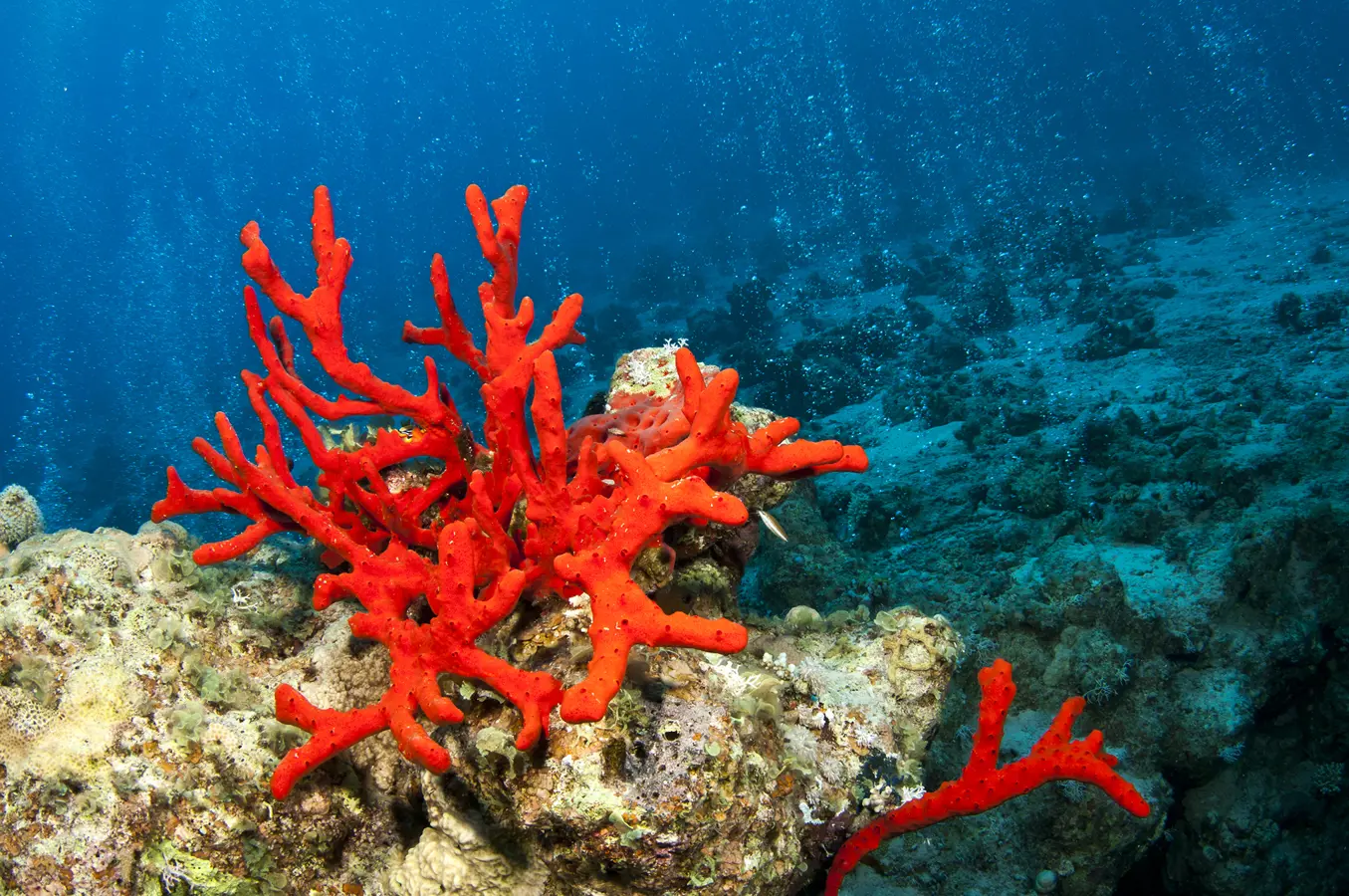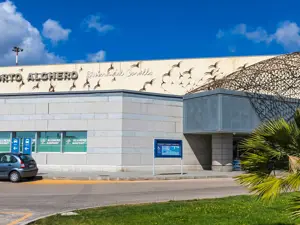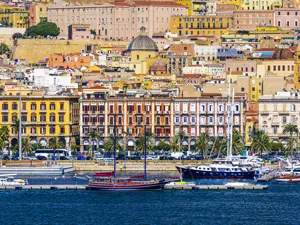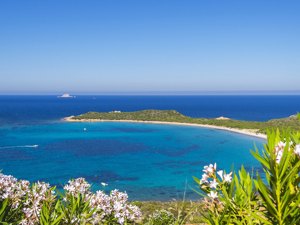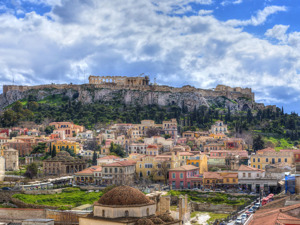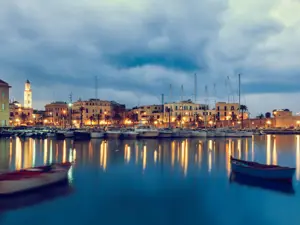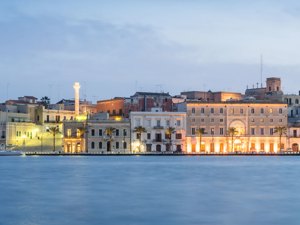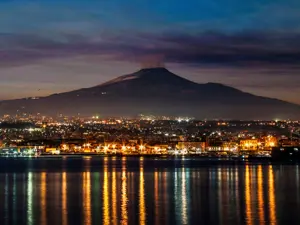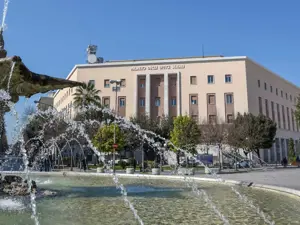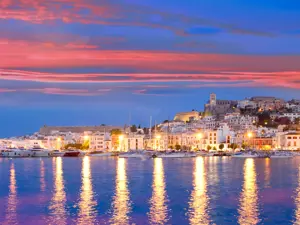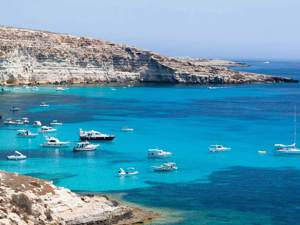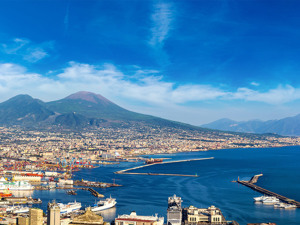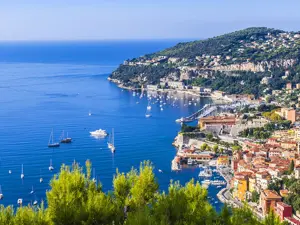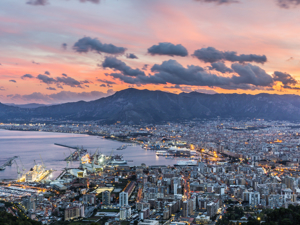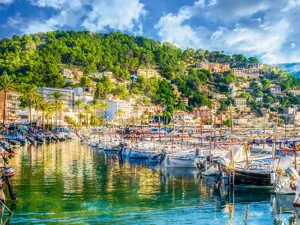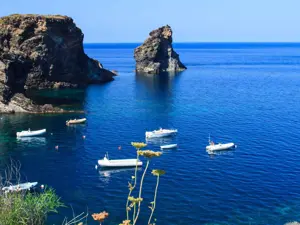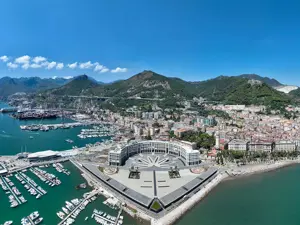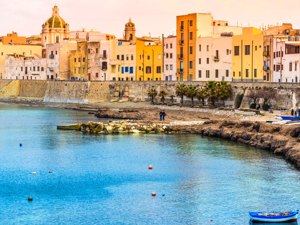A spectacular “terrace on the sea”
You could call Alghero a “terrace on the sea”, with its 80 km of coastlines that stretch from Capo Marrargiu to Porto Ferro and one of the clearest expanses of water and sandy beaches that are some of the most frequented and best known among the international jet set.
From the north it is possible to admire the extraordinary spectacle of small coves and inlets, as well as Piana Island, Capo Caccia, and the forest refuge of Mount Timidone, where tours on horseback or rock climbing can be undertaken.
The city boasts an enviable Mediterranean climate and offers visitors a look back into its rich historic and cultural heritage, evidence of which is provided at first glance by the walls, demonstrating its vocation as an ancient walled city, which were built out of a necessity to defend itself from numerous enemy attacks.
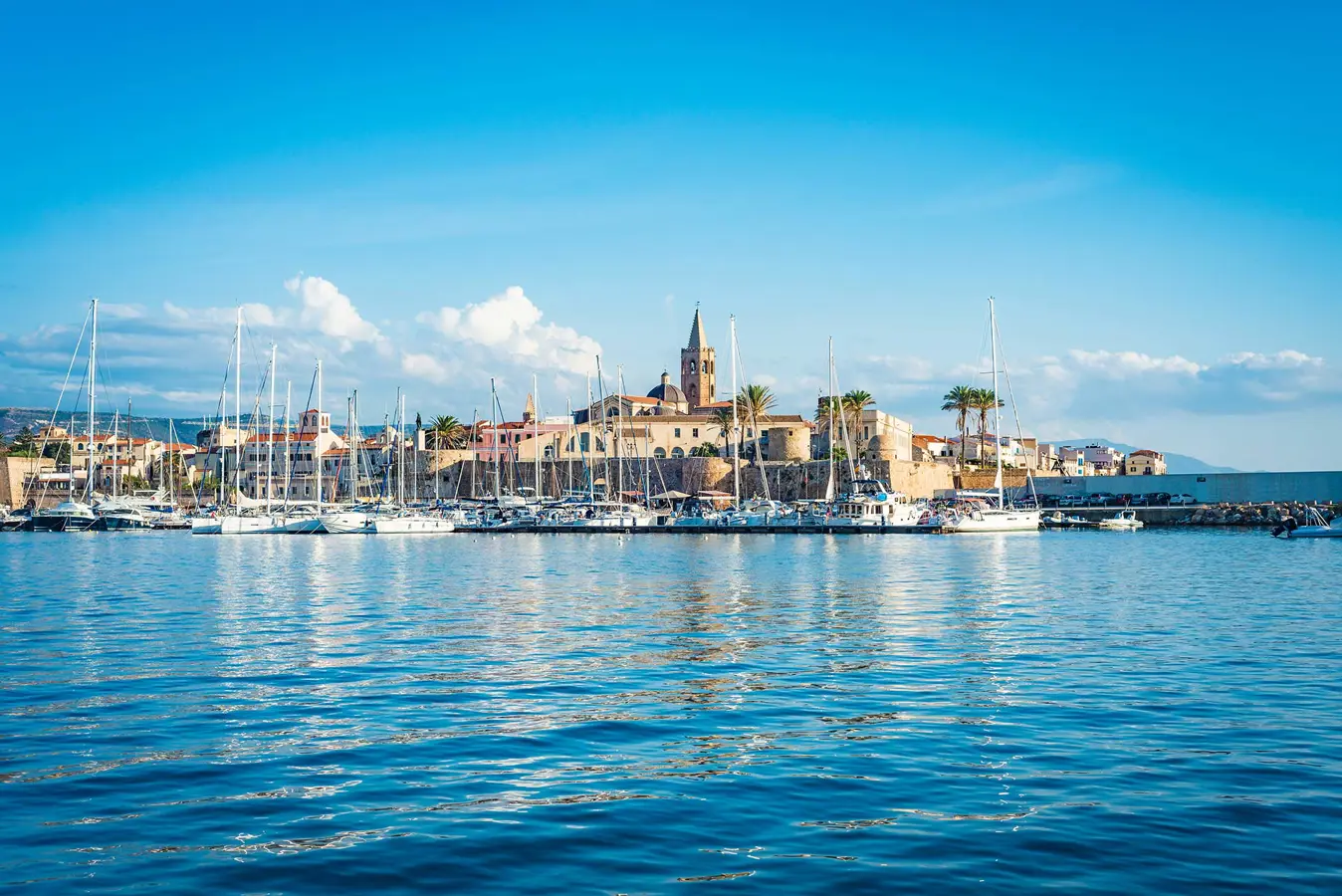
Alghero. Photo: Copyright © Sisterscom.com / Shutterstock
In fact, Alghero has ancient origins: it was founded by the Genoese Doria family in the twelfth century and was subsequently conquered in the second half of the fourteenth by Peter IV, the “Ceremonious”, king of Aragon, who made it Catalonian; it is still called ‘Little Barcelona’ to this day. Traces of the previous rulers are still visible in both the architecture and the urban structure of the city centre, as well as in the genuine culture of the city, where a Catalan dialect is still spoken that dates back to the time of the Spanish conquest and remains virtually unchanged.
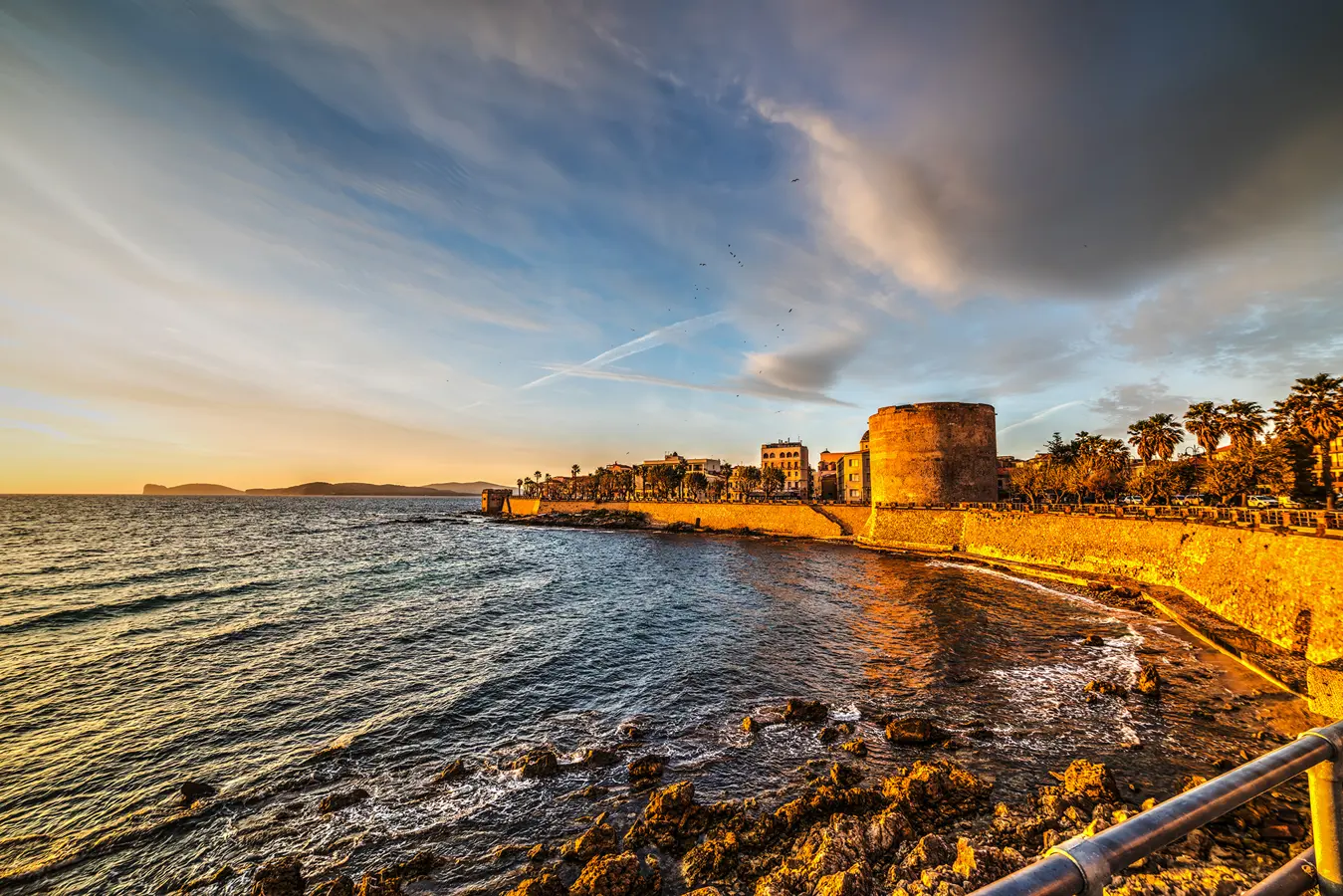
Alghero. Photo: Copyright © Sisterscom.com / Shutterstock
Powerful walls surround the city, with Seven tall towers. The Piazza Civica in Alghero is an important landmark, with impressive medieval buildings, the Church of San Francesco and its charming cloister, under which many cultural events are held, the Forte della Maddalena, once a bastion of defence, now transformed into a spectacular open-air theatre, and the Teatro Civico (Civic Theatre), a small architectural gem that opened in 1862.
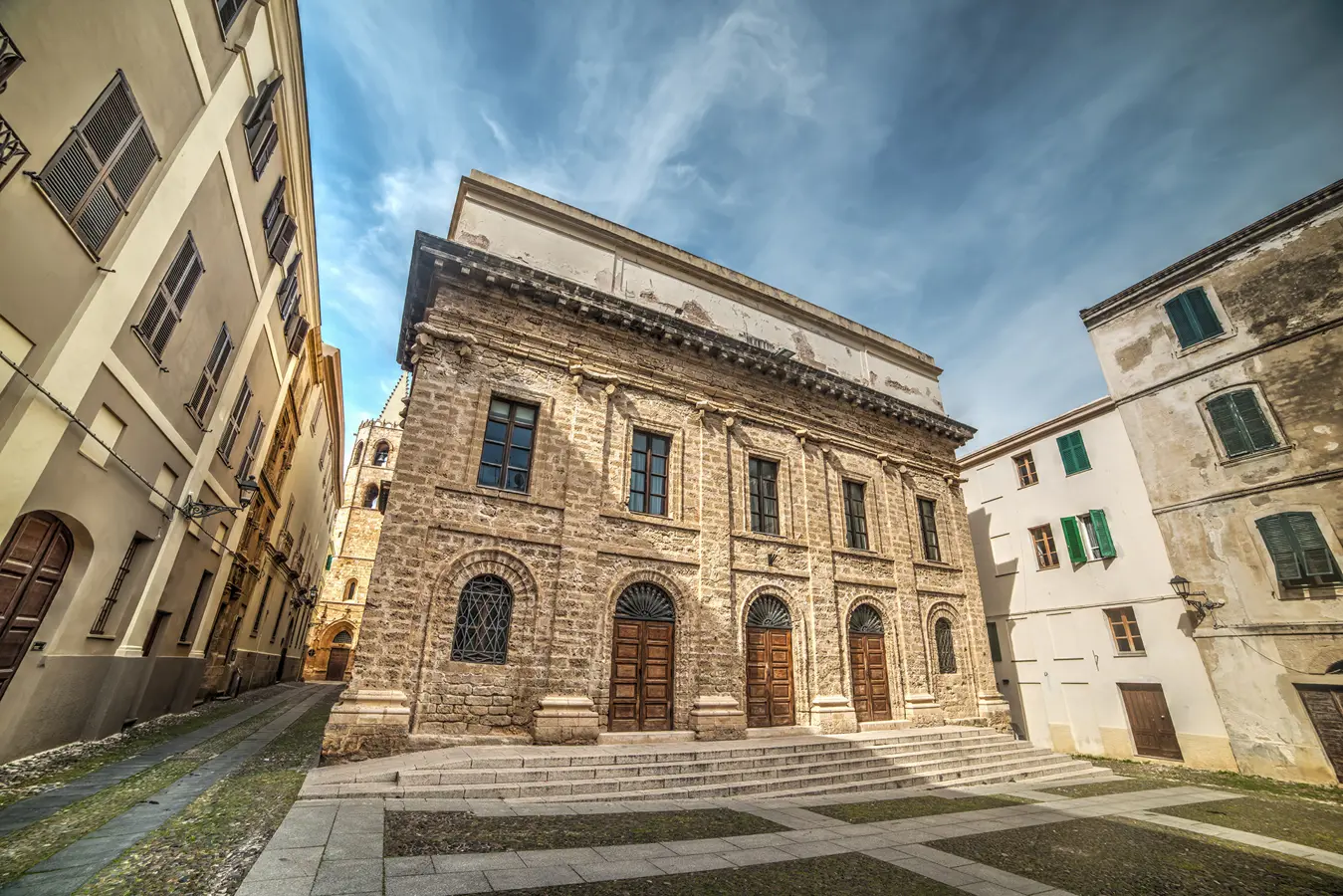
Alghero. Photo: Copyright © Sisterscom.com / Shutterstock
Since the nineteenth century, Alghero has been home to national and international tourism: the villas south of the city are a testament to this: they were vacation residences for the nobles and lords of the time. Again in the second half of the nineteenth century, in 1861 to be specific, the first tourist beach and the city’s first hotel were opened.
In the summer, now more than ever, Alghero is bustling with holidaymakers from all backgrounds, but there are also events that take place during the other seasons that are attractive to tourists: November, for example, is the month for wine, mushrooms, olives… and during Winter there are impressive events dedicated to Christmas and the famous New Year’s Eve celebration, know in the local dialect as Cap d’Any. The festivities that take place during Holy Week are also well known, with an intensely realistic celebration of the Passion of the Christ.
Alghero’s history is linked with red coral. When it comes to resources other than tourism, Alghero’s history is linked with red coral, in terms of both fishing and its processing: in fact, from the first Catalan period, the artisanal use of red coral is one of the main focuses of local workmanship and there are many shops that offer this precious gift of the sea in the form of necklaces, earrings, jewellery of all kinds, but also small statues and other trinkets that one can use as good-luck charms.
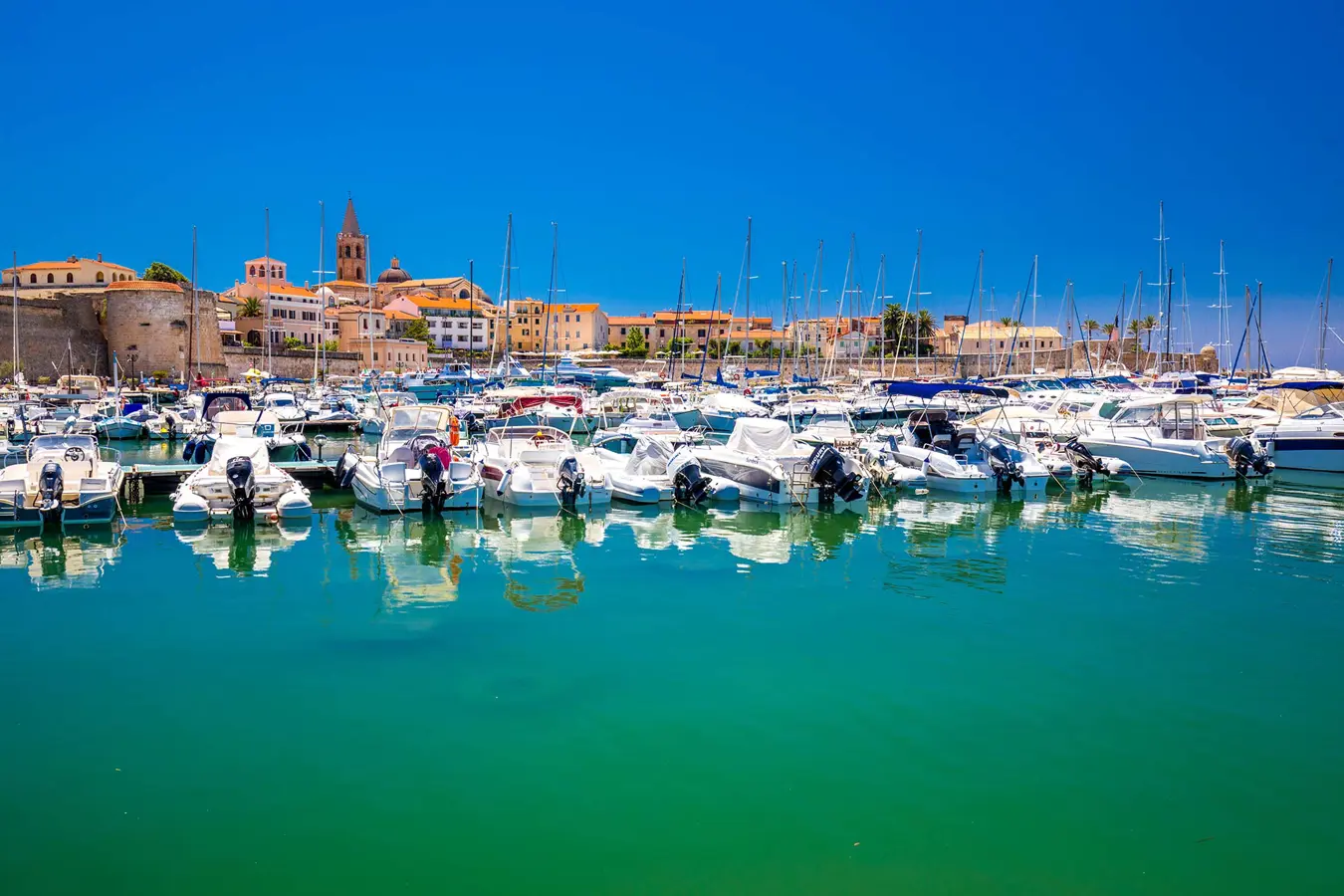
Alghero. Photo: Copyright © Sisterscom.com / Shutterstock
Many sports can be undertaken in the Alghero sea, and among other things the city has a well-equipped marina: sailing, surfing, diving (which is very popular thanks to the possibility of visiting some of the many underwater caves), and fishing are only some of the many activities that are on offer to the lucky holidaymaker.
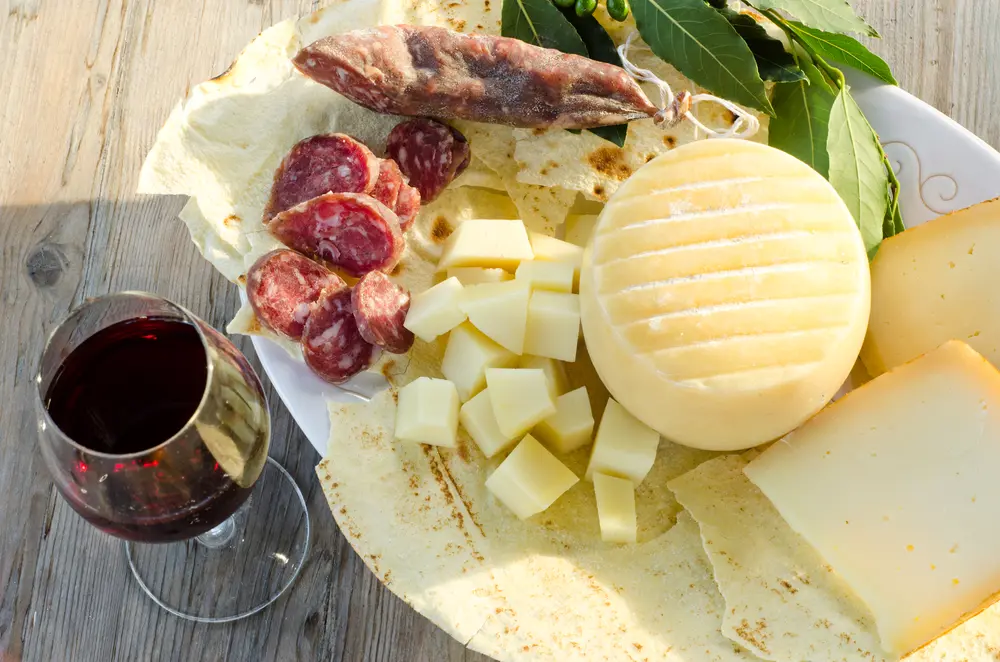
Photo: Copyright © Sisterscom.com / Shutterstock
Gastronomy of Alghero
The local cuisine is as varied as one might expect, combining flavours of the sea with the strong and aromatic flavours of the earth, with traditional dishes: grilled goat, game, cheeses, pastries, but also inimitable recipes involving sea urchins and lobster.
Text by Anna Glik
Updated by Alisè Vitri
Avion Tourism Magazine
Photos: Copyright © Sisterscom.com, Shutterstock
All rights reserved. Copyright © Sisterscom.com
Tourism Board
www.alghero-turismo.it
www.sardegnaturismo.it
Partnership with Booking.com
Where to sleep in Alghero
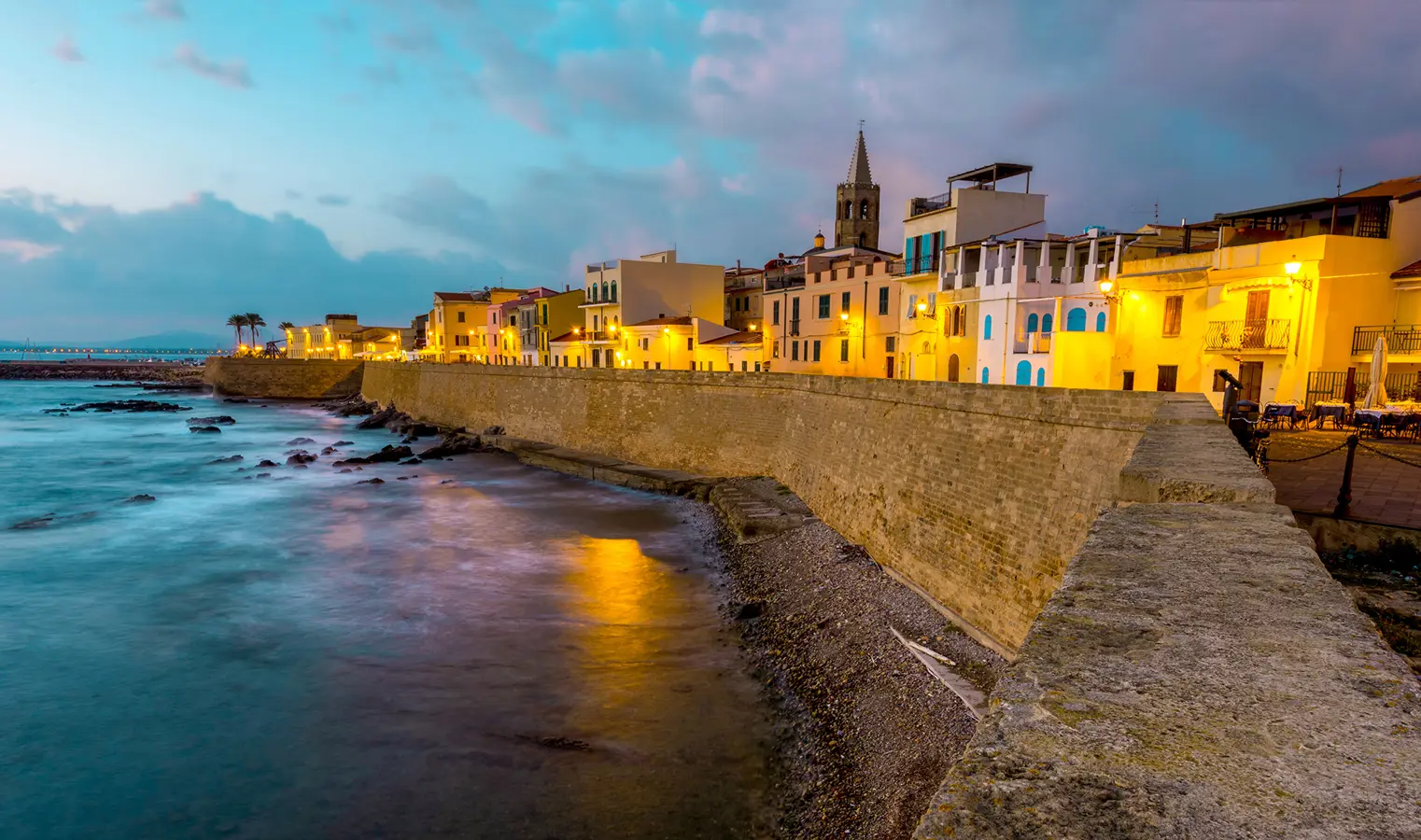 Alghero. Photo: Copyright © Sisterscom.com / Shutterstock
Alghero. Photo: Copyright © Sisterscom.com / ShutterstockAlghero is a welcoming city and offers different possibilities for accommodation.
To find the ideal hotel and the best offers you can do a search for the stars but also for districts or landmarks.
STARS
Hotels for stars, differentiated by type of services:
Where to go in alghero
Monuments of Alghero
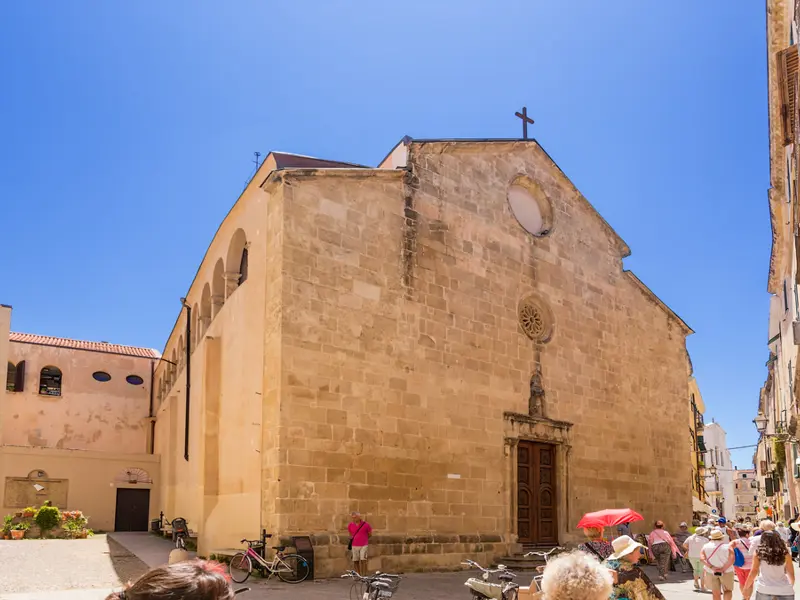
Photo: Copyright © Sisterscom.com / Shutterstock
SAN FRANCESCO CHURCH AND MISERICORDIA CHURCH
In one of the most frequented districts can be found the splendid Chiesa di San Francesco (San Francesco Church), which dates back to the XIV century. Partially rebuilt after collapsing, it combines typical signs of Catalan Gothic and the Italian Renaissance style; it is impossible not to be intrigued by the wonderful cloister and bell tower. Not far from there is the Chiesa della Misericordia, which was built in the XVII century in order to house the precious Santcristus, a wooden likeness brought over from Spain. Over time it has become the symbol of the Holy Week during which popular worship culminates with the heartfelt participation by the whole community in the traditional processions.
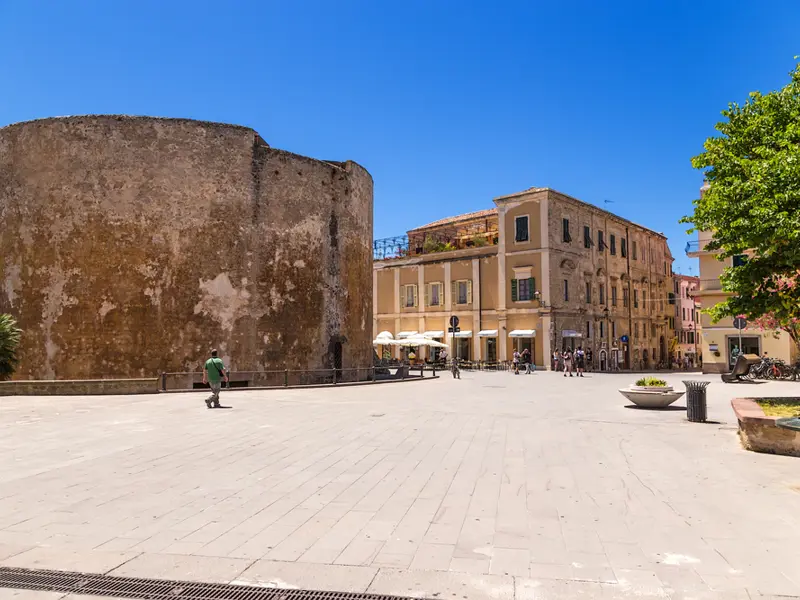
Photo: Copyright © Sisterscom.com / Shutterstock
SULIS SQUARE
One of the main squares of the city is Piazza Sulis, historical meeting point for Alghero nightlife, that is the location of many of the oldest and most prestigious local symbols of the Catalan tourism boom of the 60's. Modified in places, with the adding of new youth-centred, fashionable clubs is still today a landmark for residents and tourists alike. The tower, Torre dello Sperone, better known as “Torre di Sulis”, which with its 22 meters of height is the most imposing of the city walls, overlooks the square.
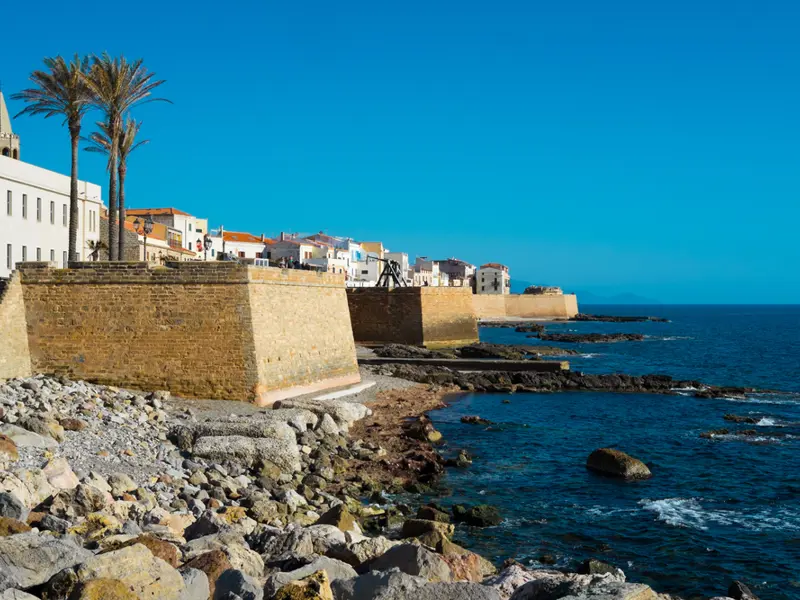
Photo: Copyright © Sisterscom.com / Shutterstock
THE WALLS OF ALGHERO
The city of Alghero was fortified by the Genovese family Doria in 1102 to secure its holdings of the city. But Alghero became Catalan and they defended and reinforced its walls. The entrance into Alguer took places through two doors: Portal Reail (current Porto Terra) and Porta a Mare (current Porto Salve). Even today, in spite of partial demolitions, the walls continue to be a strong place, which is emblematic of the of the identity of the Alghero populations.
Museum of Alghero
MUSEUM OF DIOCESAN SACRED ART
The Madonna del Rosario, an ancient patrician's house later transformed into a church, since 2000 it has housed the Museo Diocesano d'Arte Sacra (Museum of Diocesan Sacred Art), where valuable paintings, silver objects, marble and images are on display from all over the diocese. The collection of silver, wooden sculptures and paintings document the long evolution over the centuries of cultural and religious life nestled within its territory and open to other towns in Italy and along the Mediterranean.
ARCHAEOLOGICAL MUSEUM OF THE CITY
The Archeological Museum of the city of Alghero contains ancient testimony of the presence of early man in the area, from the proto-historical period up to the Phoenician and Roman period. An exhibition path organised around three particularly significant themes for Alghero: the sea, the way of life, the world of the sacred. The museum is recently renovated that had once been the monastery adjacent to San Michele Church.
MUSEUM CASA MANNO
Situated in the oldest historic centre nucleus, the Museum Casa Manno has a considerable heritage exhibition composed by furnitures, paintings, sculptures, old presses and books regarding the great intellectual, Giuseppe Manno. The itinerary between 11 rooms offering, with interactive multimedia support too, the story of Manno, tell us a story of Sardinian population between the end of eighteenth and the nineteenth century. The museum also has a room for children entertainment and for didactic museum.
THE CORAL MUSEUM
The Museo del Corallo (The Coral Museum) is located inside a Liberty-style villa and shows the history of Mediterranean Sea through the main resources of the territory, the “Corallium Rubrum”.
A fascinating voyage through the marine ecosystem, within the history of this precious living organism, an immersion into the sea surrounding the City of Alghero.
A fascinating voyage through the marine ecosystem, within the history of this precious living organism, an immersion into the sea surrounding the City of Alghero.
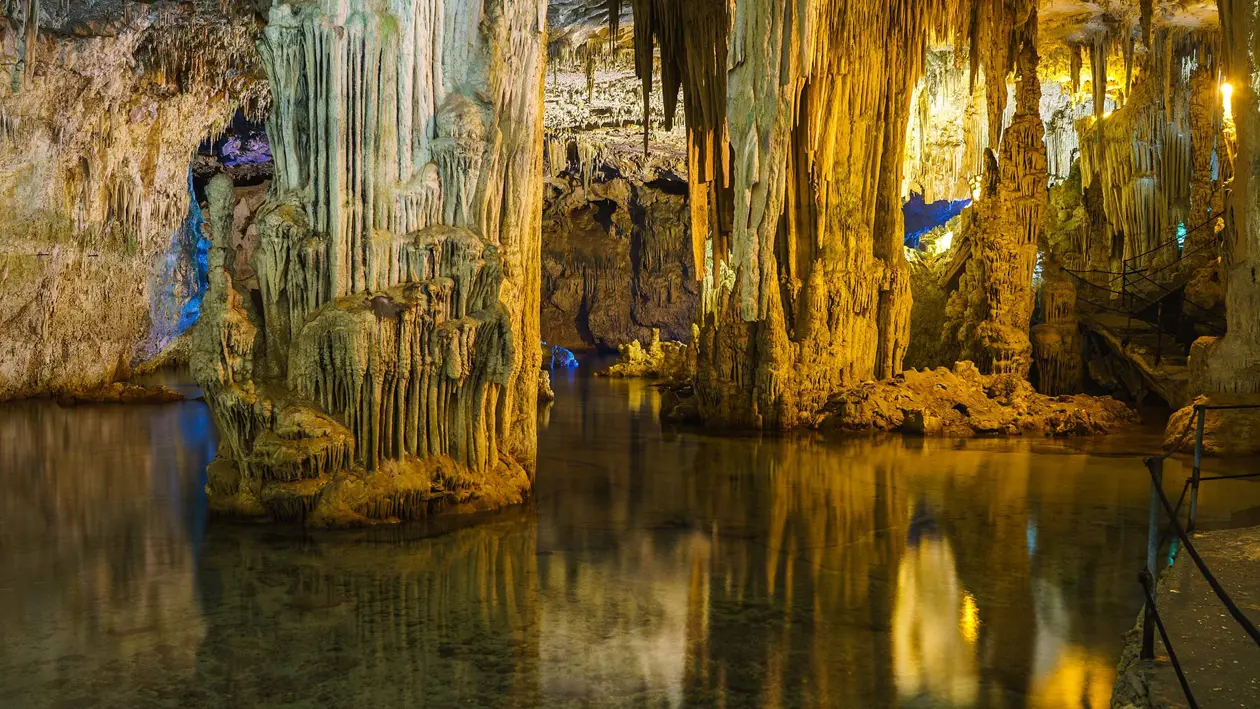
Alghero. Neptune's Grotto. Foto: Copyright © Sisterscom.com / Shutterstock
Excursions in Alghero
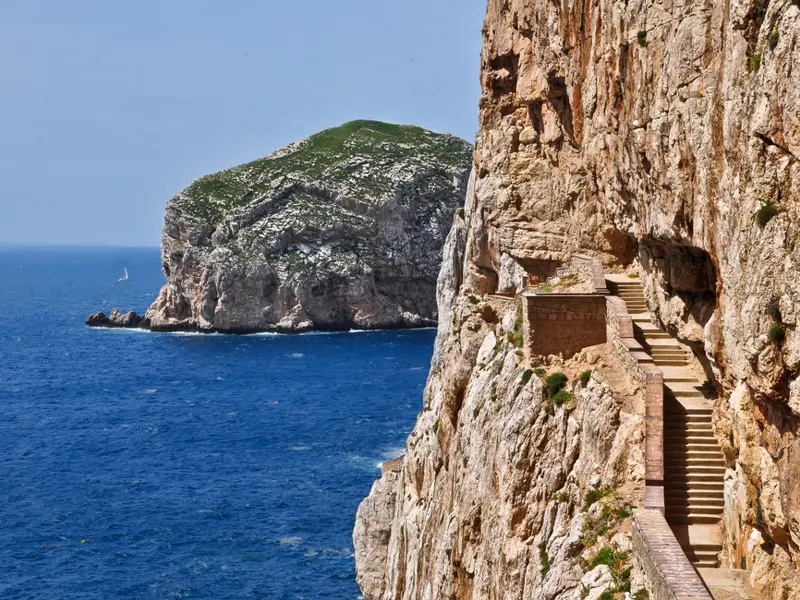
Photo: Copyright © Sisterscom.com / Shutterstock
NEPTUNE'S GROTTO
In the heart of the cliffside of Capo Caccia is situated a scene of the fairytale underworld of the Grotta di Nettuno (Neptune's Grotto). The grotto is a veritable geological wonder that attracts over 150,000 visitors per year. It is accessible by sea with the “Linea Grotte” boat lines leaving the tourist port or on foot via “Escala del Cabirol” (Billy Goat Stairs), a set of 660 steps cut into the cliff side. Stalagmites an stalactites created majestic scenery; the most important is the Sala Smith (Smith Room), where the Grande Organo (Great Organo), can be found the largest column in the entire Grotto.
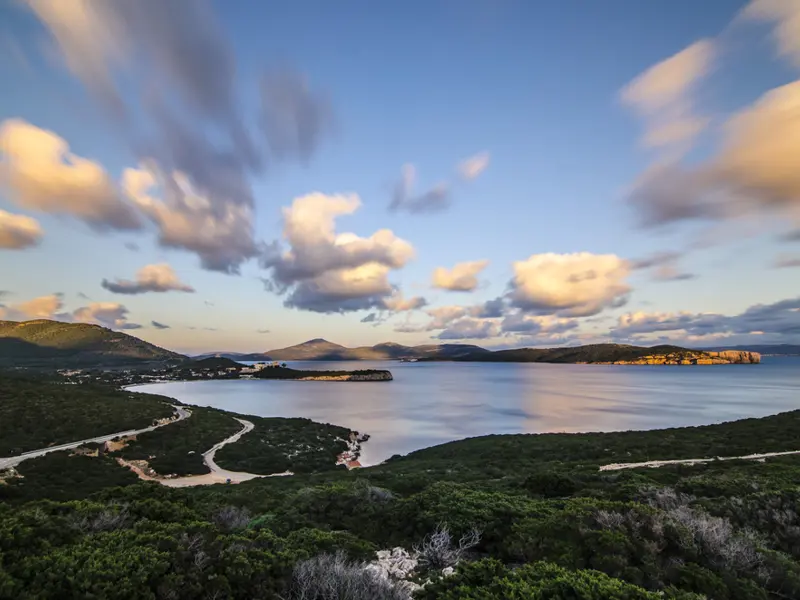
Photo: Copyright © Sisterscom.com / Shutterstock
REGIONAL NATURAL PARK
OF PORTO CONTE
The Park begins immediately north of Alghero with the Calich lagoon, extends towards the coastline, spreading throughout the whole northern area of the territory. The park is a succession of hills and curves leading towards the sea. The highest peak is Mount D'Olla with its 437 metres. The park also includes “Le Prigionette” State Forest, an extremely important natural reserve inhabited by different floral and faunal species of particular scientific interest. Different nature trails are suitable for all tastes and ages from a family excursion, to the more adventuresome and for birdwatchers.
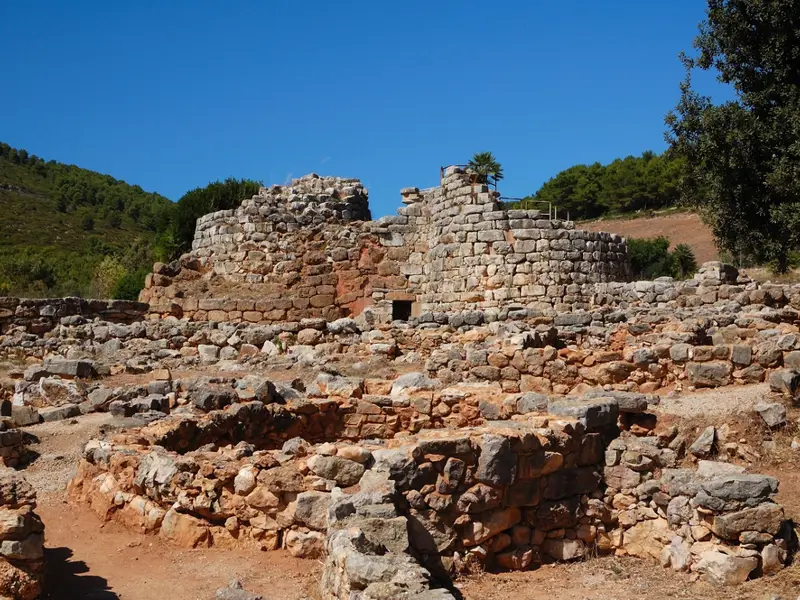
Photo: Copyright © Sisterscom.com / Shutterstock
THE NURAGIC VILLAGE PALMAVERA
With over 7000 Nuraghes all over Sardinia, the Palmavera village, is located at the foot of the hill of the same name about one kilometer from the sea, is one of the most important that the Nuragic civilization has built on the island of Sardinia. It is divided into two towers made up of large blocks of limestone and sandstone, surrounded by an wall and by a village made up of an estimated 150-200 huts (now about 50 remain). The various architectonic elements used are proof of the building skills of this unexplored civilization.
Partnership with GetYourGuide
Discover all tours
News & Useful info
Luxury
Destinations found in the vicinity
Other destinations
Airports nearby Alghero

